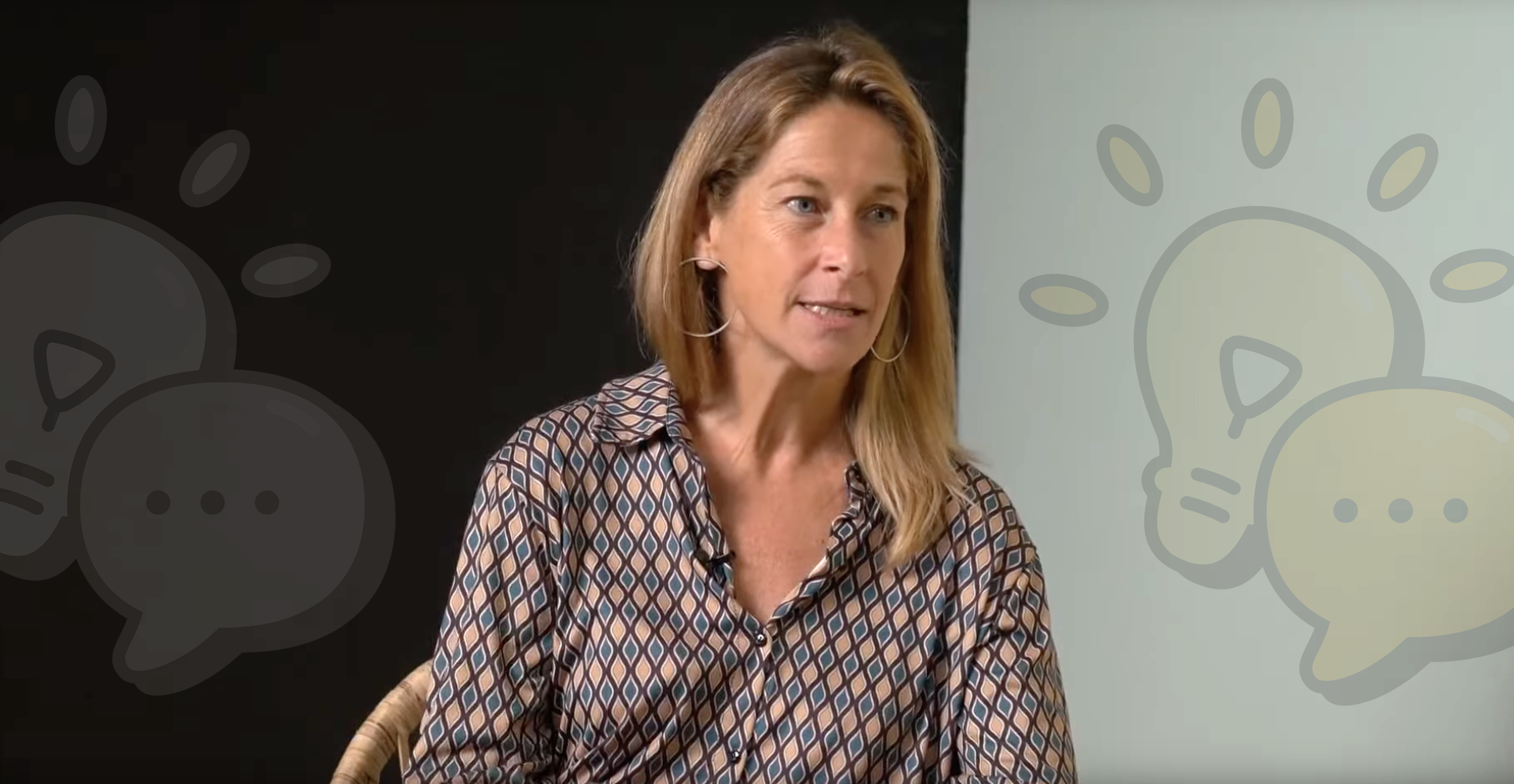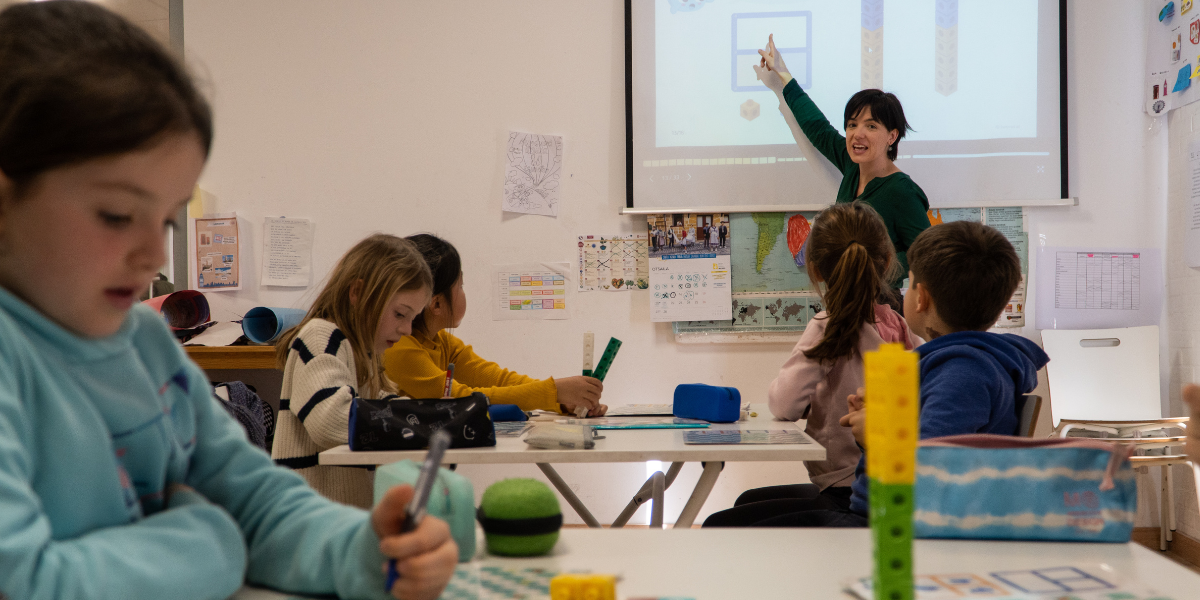Begoña de la Iglesia is an educational psychologist and a doctor in Educational Sciences who focused on the learning difficulties. She specializes in inclusive education and teaches a Master’s class of teacher training in the University of the Balearic Islands. She joined us in the first session of the lecture series and helped us to better understand where the investigation into learning difficulties currently stands. Would you like to know the questions she was asked? Let’s go!
What is the status of the investigation into education in Spain?
As we know, investigation generally isn’t covered very well and if we also talk about investigation in education, two more challenges are added. The first one is making the relevant information reach schools, and the second is for the results of these investigations to be applied to the classroom dynamics and for teachers to use them to improve and develop professionally.
How can this investigation help students? And teachers?
Firstly, by working on the interests and needs that naturally arise from the classroom day to day. We receive requests from different educational centers in which teachers are faced with students who, although they use different methodologies and materials adapted to their needs, do not manage to learn everything that is expected of them. And many times these barriers do not come from the student, but from the context; that is why we must start talking about inclusive education.
Let’s talk about inclusive education
The framework the investigation group I belong to works in is inclusive education. Specifically, I specialize in learning difficulties, but I work in many other areas: in mathematics education, in hospital pedagogy, also in research projects with the Autonomous University of Barcelona on peer observation and feedback, in cooperative learning, etc. The main objective is to cater to any student who comes to the center, whatever the background, and give them an appropriate response to their educational needs.
Could you briefly comment on the theoretic framework of your inclusive education project?
Our theoretic framework comes from our knowledge of the work carried out by different international references, such as Booth and Ainscow, who designed the Inclusion Index. This document helped us define and evaluate whether a center is inclusive and in what areas they should improve to give a fairer response to all students. Here is where what we call the 3 Ps come into play:
- Presence: Everyone has a right to education, going to school, learning and being in their classroom.
- Participation: Everyone should be able to participate in the planned activity and have the necessary resources to be able to learn.
- Progress: This participation should generate quality learning and it is necessary for everyone to enjoy progressing.
Additionally, from our group, we add a fourth principle:
- Independence: It is necessary for learning to last, and for it to reach informal environments.
What is Universal Design for Learning (UDL)?
Universal Design for Learning is the implementation of inclusive learning. It is a learning model that helps us anticipate any barrier that a student could run in to. This way, we can design activities and learning situations keeping in mind the materials and instructions to give when these barriers appear. For example, we can encourage students to work collectively. From seeing how an equal works and the feedback they could receive, the student can contrast information and improve what we have just done in the classroom.
What do we mean when we talk about learning difficulties?
It’s a controversial topic and it’s difficult to define. Eduardo Rigo, Professor of the University of the Balearic Islands, has an interesting take:
When we talk about learning difficulties, we think precisely of these students who are thought of as under the umbrella of ‘students with specific difficulties’, because they have specific difficulties in reading, writing, and mathematics, but not in other areas. We have to ask why this is happening to them and how we can respond.
What is dyscalculia?
According to the fifth edition of the Diagnostic and Statistical Manual of Mental Disorders, dyscalculia is an alternative term used to refer to a pattern of difficulties characterized by problems in processing numerical information, learning arithmetic operations, and calculating correctly and fluently. In short, the difficulty of processing numerical information. Often, students with dyscalculia are proficient in other areas, but have serious difficulties in the numerical domain.
How do we implement the resources for these specific cases?
We set a challenge and a very inclusive response: to offer the necessary resources to ensure the student with difficulties is able to learn, but which can also benefit the rest of the group. That is, focus our attention on the most vulnerable group but adapt these measures and resources for the whole class.
How do we detect these difficulties?
There is a diagnosis within the clinical frameworks, but we are committed to trying to intervene prior to this diagnosis. For many years, these diagnoses were made when the student had already failed in school. Our intention is not to wait for the student to fail, but to prevent and identify as well as intervene. This identification involves observing the student, understanding why they are having difficulties and beginning to identify how they can learn better and how to help them. If, despite intervention, the student fails to learn, it is time to obtain a multi-professional diagnosis, with standardized and specific tests.
What is RTI?
Response to Intervention (RTI) is currently the most successful model in attention to diversity. It is based on the evidence that educational interventions are most effective when given at an early age.
For this reason, it begins with universal screening for underachievement and, from there, provides individualized interventions for students in need. In this way, students can be at different levels of intervention, where they will receive a response tailored to their needs. The levels are the following:
- Tier I or Curriculum proposal and universal screening:
We start by offering very in-depth learning situations, so that everyone can learn based on their capabilities. We present so-called low-floor and high-ceiling activities, which everyone can enter (low-floor), but which also challenge those who can go further (high-ceiling).
If with this universal support, some students continue having difficulties learning, we move on to a second level of intervention.
- Tier II or Intervention:
In this second level of intervention, we try to provide strategic support in small groups. We can further individualize learning by giving children the tools they need to move forward. These may include materials better suited to their needs, extended practice hours, reinforcement of basic concepts, etc. These interventions usually last 12 to 16 weeks, and, if we do not see an adequate response, we move on to Tier III.
- Tier III or Diagnosis:
The last level goes further into personalized attention and intervention. It allows us to consider cognitive, motivational and emotional variables to try to solve difficulties in an individualized way, and to advance towards a possible diagnosis.
Do we have evidence that RTI or interventions work?
RTI is an internationally consolidated framework. In the USA, the Netherlands and Finland, for example, such interventions are integrated into the education system by default. In our country, we have a very good pilot study carried out by the research group of Juan Jiménez, at the University of La Laguna (Canary Islands). And, additionally, at Innovamat we also carried out a similar study called, ARTIST.
In any case, the key to fundamental change lies in sharing this knowledge with teachers and professors, and above all, future ones. UDL, RTI and learning difficulties should be part of the subjects we teach in universities and in teacher training, so that they can be extended and implemented in the classroom effectively.
Thanks, Begoña.






